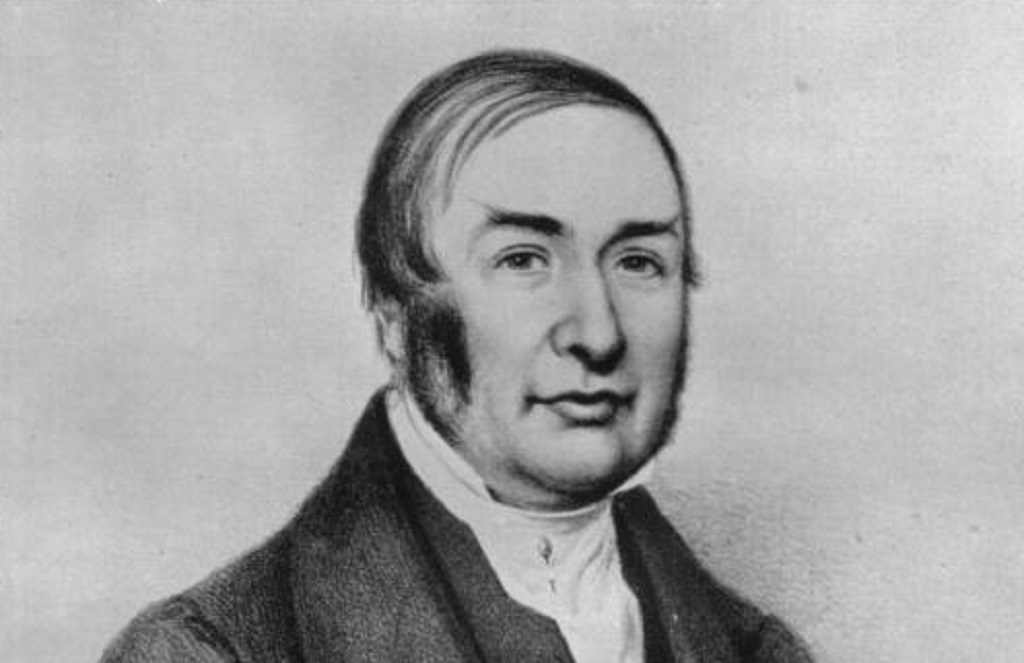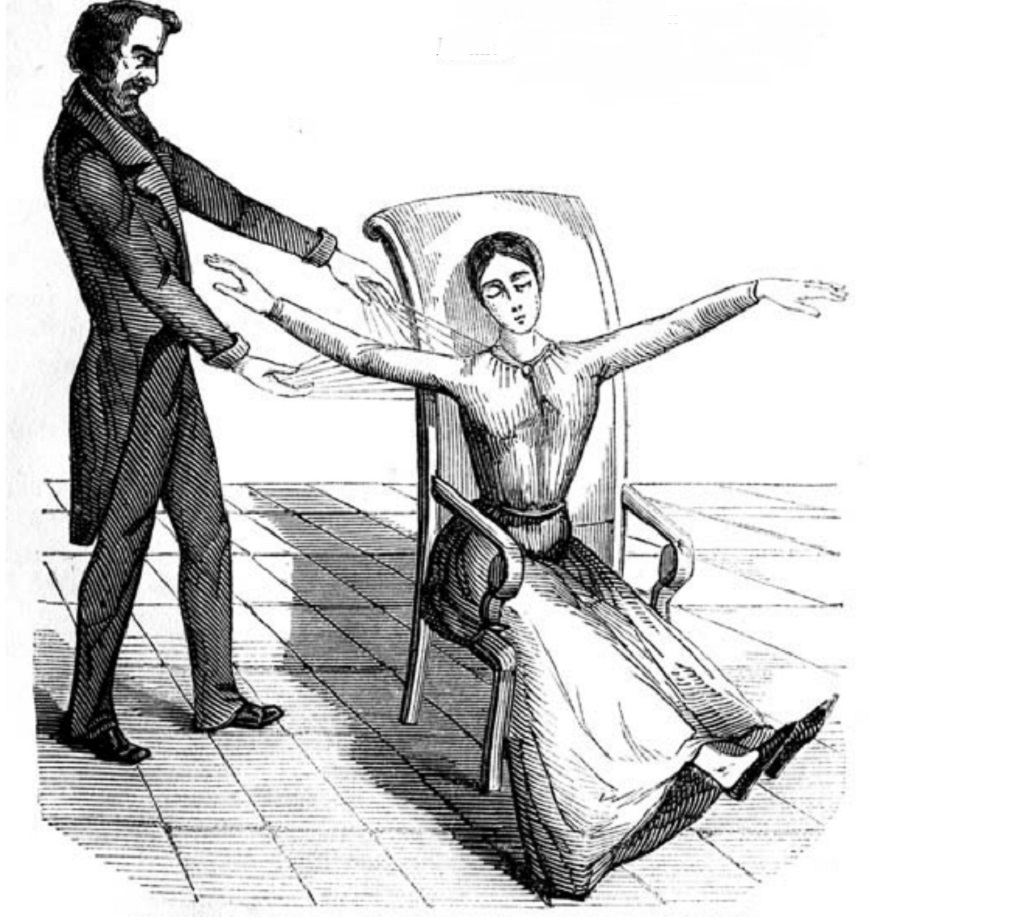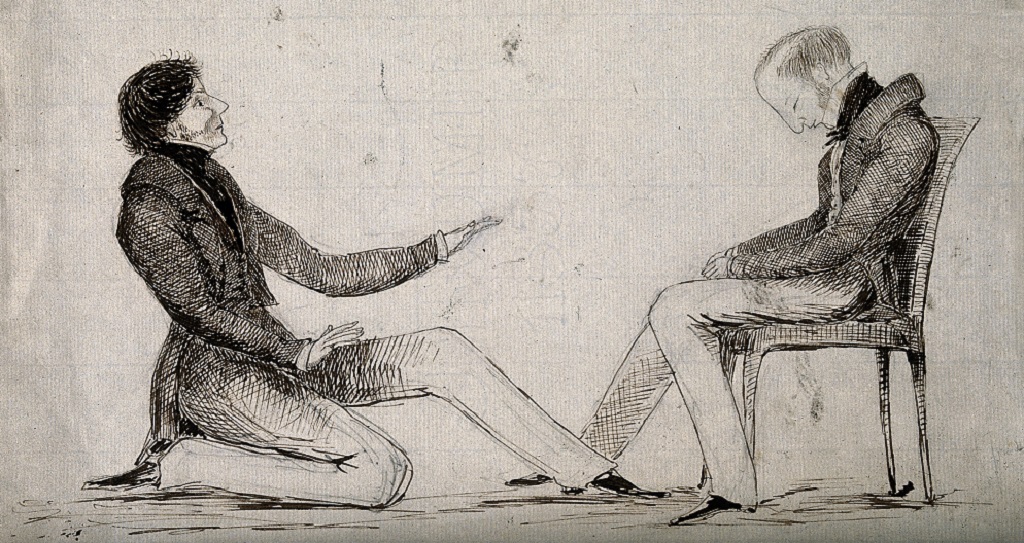Hypnotism, or mesmerism as it was once known, is a familiar and fascinating subject to us in the 21st century.
Performers such as Derren Brown, who use it in their acts, draw thousands of spectators to sellout shows. Paul McKenna tops the bestseller charts with books that harness the power of the mind to make the reader rich, confident, lose weight and quit smoking. Psychotherapists put their patients under to unravel neuroses and cure anxieties. We might not fully understand how it works but there seems no doubt that it does.
If we are still amazed by the power of hypnotism, one can only imagine the effect it must have had on those who witnessed it in earlier centuries. Enraptured crowds from the 1600s onwards flocked to see ‘mesmerists’ and ‘animal magnetists’ on stage, while the Church, suspecting ‘attempts to foretell the future and invoke the devil’, condemned the practice as evil. Magnetism was touted as a spiritual practice by some, who claimed it had been the source of Christ’s miracles.
James Braid was one of the few who were neither dazzled nor scandalised. Rather, he was intrigued. Born in 1795 in Kinross, he had studied medicine at the University of Edinburgh and was very much a product of the Enlightenment, dedicated to scientific rigour.
His interest in the subject of hypnotism was sparked one winter’s night in 1841, in Manchester, when he recalled being ‘dragged by a friend’ to a performance by Swiss mesmerist Charles Lafontaine.

James Braid
Those who had witnessed his performances as he toured Europe described Lafontaine as a true theatrical artist who used mesmerism to make his subjects unreceptive to pain – a feat he would dramatically ‘prove’ by burning them with candle flames or giving them electric shocks.
Incidentally, he used the same two assistants, Mary and Eugene, throughout his tour, which didn’t elicit nearly as much suspicion as it would today.
At that first show, Braid believed Lafontaine’s performance to be nothing more than ‘a system of collusion or delusion, or of excited imagination’. But he was persuaded to go back to watch a second show and this time he saw something that caught his attention: the mesmerist’s subject was unable to open his eyes.
A Prof William Crawford Williamson, who was also in the audience that night, graphically described what happened next: Braid mounted the stage, led by a prominent eye surgeon called Mr Wilson, where he attempted to expose the whole performance as a sham.
But on lifting the subject’s eyelids, he was astonished to find that the pupils were unusually contracted – an involuntary response normally indicative of deep sleep.
Braid’s investigative technique was typical of a Victorian surgeon: getting nowhere with the eyelids, he brutally crammed a pin under the subject’s fingernails, but got no response. He had no option but to recognise that an indisputable transformation had taken place in the subject’s physiology and state of mind.

Swiss mesmerist Charles Lafontaine
‘I had discovered the cause,’ Braid later wrote, ‘but considered it prudent not to announce my opinion publicly until I’d had the opportunity of testing its accuracy by experiments and observation in private.’
These experiments, conducted on friends, family and himself, quickly got under way. His first method entailed holding a small light between 20 and 30cm in front of his subject’s eyes.
From this, he concluded that a psycho-physiological mechanism was fundamental to mesmerism: all that was required to induce a trance-like state was the subject’s ‘fixity of vision’ on ‘an object of concentration’ at such a height and distance from the bridge of the nose, ‘paralysing nervous centres in the eyes, and destroying the equilibrium of the nervous system’, resulting in what he called the ‘upwards and inwards squint’.
Back home in Scotland just a week after he’d seen Lafontaine for the first time, he shared his findings with several witnesses, with ‘the experiments varied so as to convince all here present that they fully bear out the correctness of my theoretical views’.
Soon after, Braid wrote to the Medical Section of the British Association for the Advancement of Science, asking if he could deliver his practical report. This was declined over concerns about its controversial nature. Undaunted, Braid gave a well-attended public reading of his report at the end of 1841, during which he rejected the ‘animal magnetism’, or ‘mesmerism’ of Franz Mesmer. (Mesmer had proposed that humans and animals could exert an invisible force or magnetic field that produced physical effects.)
Braid stated that he could replicate the effects created by Lafontaine without apparent telepathic power or occult force. These criticisms would become the basis of his theory of ‘hypnotism’, a term he coined from Hypnos, the Greek god of sleep.
The public reading generated a lot of interest and he was soon in London to give a formal lecture to numerous renowned scientists and physicians.
One sceptic, Herbert Mayo, Professor of Physiological and Pathological Anatomy at King’s College, volunteered as subject – something he might have regretted when, put in a trance-like state by Braid, a pin was pushed right through his hand and out the other side. Braid also demonstrated his discovery that ‘olfactory hyperacuity’ would develop in this state, by showing a blindfolded subject following the scent of a rose.
Not everyone was thrilled by these developments.
Hugh McNeile, a cleric, preached a sermon asserting that Braid’s practice was of ‘satanic agency’ and ‘witchcraft’. Braid, a Christian, responded, explaining that the phenomenon was ‘solely attributable to a peculiar physiological state of the brain and spinal cord’. He made clear his belief that ‘the mind and body are two fundamentally distinct entities which interact’. The induced effect, therefore, conformed to the well-established laws of psychology and physiology.

A practioner of mesmerism
Braid went on to disprove various Victorian pseudoscientific therapies involving magnets, crystals and homeopathy, and in 1843 published an influential book entitled Neurypnology, in which he debunked the ‘extreme notion that a mesmeriser’s will has an irresistible power over his subjects’.
He later grew less fond of the word ‘hypnotism’ and tried to substitute it with ‘monoideism’ place (to express the narrowing of the subject’s attention to a single idea or train of thought), but his original term stuck.
Braid used hypnotism to treat various conditions. In the case of a 45-year-old man with limited mobility following a spinal injury, he was able to sufficiently release the pain during two months of daily sessions so that the patient could return to work. He worked on further cases of paralysis, rheumatism and stroke.
But he knew its limitations, as John Milne Bramwell, a close associate, revealed: ‘Although Braid believed that hypnotic suggestion was a valuable remedy in functional nervous dis orders, he did not regard it as a rival to other forms of treatment, nor sought in any way to separate its practice from that of medicine in general.’
Braid had a large number of friends and enthusiasts among the most renowned scientists, academics and physicians of the 19th century.
His legacy was maintained largely by Bramwell, who published a biography as well as various books on hypnosis derived from the ground rules set by Braid. The Scot’s observations served as the foundations of modern hypnosis and his work is celebrated today in organisations such as the James Braid Society, a group ‘involved in the ethical uses of hypnotherapy’, which meets every month in London.
This feature was originally published in 2016.
TAGS

